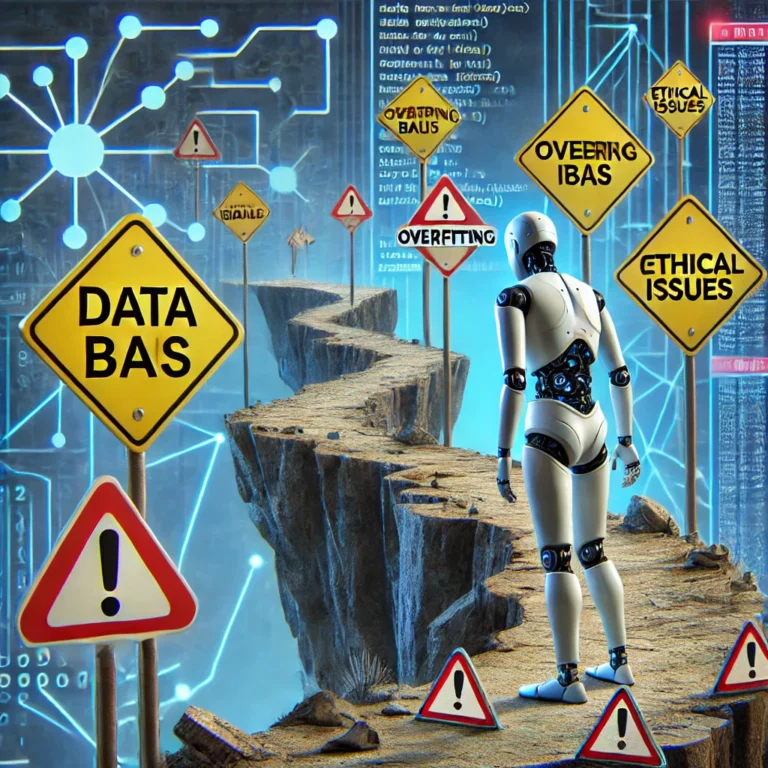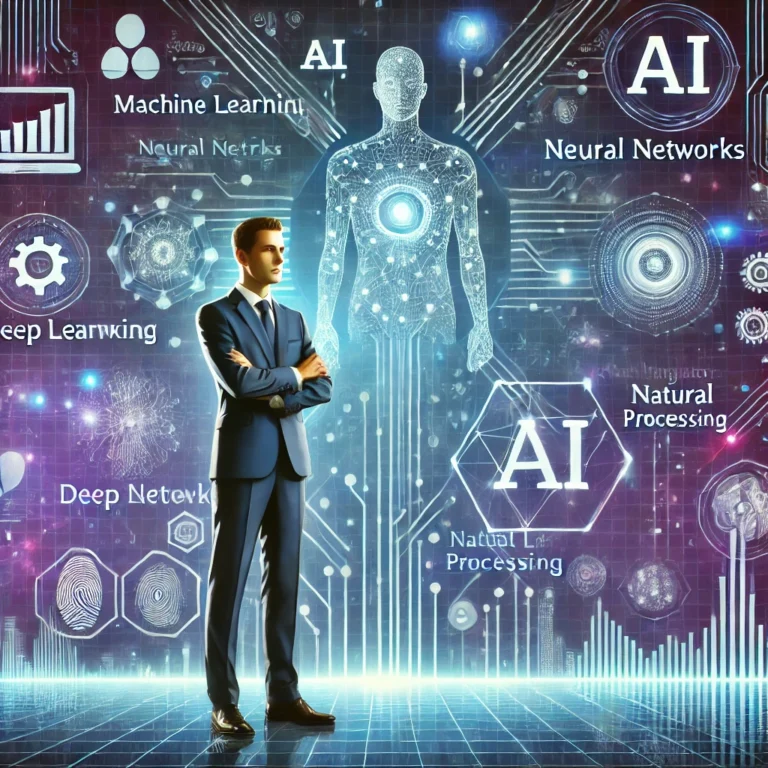Cracking the AI Enigma: A Bold Look at the Myths, Magic, and Might of Machine Intelligence
Artificial Intelligence (AI) refers to computer systems designed to perform tasks typically associated with human intelligence. These tasks might include learning, decision-making, problem-solving, recognizing speech, and understanding language. While AI has been in development for decades, recent breakthroughs in computing power, algorithms, and data availability have accelerated its progress, bringing it into daily life in ways both visible and subtle.
A Short History of AI
- Early Years (1950s – 1960s): The concept of AI began largely with theoretical work by researchers like Alan Turing, who proposed the idea of a machine that could mimic human thought. Early AI was mostly rule-based, depending on predefined instructions for solving specific problems.
- Expert Systems (1970s – 1980s): AI research then progressed to expert systems, where computers used large databases of hand-crafted rules to make decisions in specialized domains (like diagnosing certain medical conditions). These systems could appear very powerful but were limited to their rigid rules and knowledge bases.
- Machine Learning (1990s – 2000s): With more data and better processing capabilities, machine learning algorithms began to learn patterns from examples rather than relying purely on predefined rules. This approach allows a program to “train” on large datasets, detecting patterns and making predictions.
- Deep Learning (2010s – Present): A subset of machine learning, deep learning makes use of neural networks with many layers. Modern deep learning systems have made breakthroughs in image recognition, natural language processing, game playing (e.g., AlphaGo), and many other areas, pushing AI ever further into real-world applications.
The Reality of AI vs. Media Portrayals
Common Misconceptions
- AI Is Equal to Human-Level Intelligence
- Many media portrayals suggest that AI is already operating at human-level intelligence (often called Artificial General Intelligence or AGI). In reality, most AI systems are very domain-specific and excel in narrow tasks (like facial recognition or language translation). True general intelligence—an AI that can learn and understand any intellectual task a human can—remains a goal for the future and is not currently within reach.
- AI Works Autonomously Without Human Input
- Although AI can automate certain processes, humans are integral at every stage. From training data curation and labeling, to fine-tuning models and monitoring performance, people continually guide AI’s development and correct its course. Machine learning systems do not spontaneously become intelligent; they require careful training, immense data, and consistent oversight.
- AI Will Replace All Human Jobs
- Some sensational headlines claim that AI will lead to widespread unemployment. While AI-powered automation can replace certain tasks, history shows that new technology also generates new job opportunities. In many sectors, AI acts as a tool to increase productivity, freeing humans to focus on more complex, creative, or interpersonal tasks. Although some job displacement will undoubtedly occur, there is also an ongoing creation of new roles—for example, data annotation specialists, AI ethics advisors, and machine learning engineers.
- AI Is Always Objective and Unbiased
- AI’s decisions are only as unbiased as the data it’s trained on. If that data reflects existing biases in society, the model may perpetuate or even amplify them. It’s a misconception to think AI is inherently “fair” simply because it’s produced by algorithms. Rigorous checks, diverse datasets, and careful methodology are required to ensure fair outcomes.
- More Data Automatically Means Better AI
- While data quantity can improve AI’s capabilities, data quality is often more important. Large datasets rife with errors, duplicates, or unrepresentative samples can mislead AI models and produce poor outcomes. Ethical and responsible data collection practices ensure that AI performance and fairness are not compromised by skewed or low-quality data.
Over-Hyped Narratives
- Impending AI Apocalypse
- Pop culture and some media suggest a future where AI becomes self-aware and hostile. While philosophical discussions about existential risk are worth having, they can overshadow more immediate concerns like algorithmic bias, transparency, data privacy, and socio-economic impacts.
- Instant Transformations Across Industries
- There is a tendency to overestimate the short-term effects of AI. Many innovations touted in the media—like fully autonomous driving, flawless language translation, or perfect medical diagnosis—are works in progress, with real-world integration proceeding more gradually than headlines suggest.
- AI as a Magic Fix-All
- The narrative that AI alone can solve complex problems such as climate change or healthcare reform can be misleading. While AI can analyze data and optimize certain processes, it is just one tool in a larger toolbox. People, policies, and domain expertise remain crucial in tackling these global challenges.
Balancing Expectations and Reality
Despite the misconceptions and media hype, AI undeniably offers transformative potential:
- Healthcare: AI aids in faster and more accurate diagnoses, medical image analysis, and drug discovery, though full replacement of skilled professionals is unlikely.
- Transportation: Advanced driver-assistance systems (ADAS) use machine learning to improve driver safety. Fully autonomous cars are making progress but still face technical and regulatory hurdles.
- Customer Service: Chatbots and conversational AI can handle repetitive inquiries, allowing human agents to focus on complex customer problems.
- Manufacturing and Logistics: AI-driven robotics and predictive analytics enable greater efficiency, reducing downtime and improving supply chain management.
- Climate Modeling: AI helps in modeling climate patterns and devising strategies for energy efficiency and resource management.
AI’s real power lies in its synergy with human intelligence. By leveraging machine learning to sift through massive data sets and identify patterns quickly, we free humans to do what they do best: design creative solutions, exercise empathy, and make nuanced decisions.
How to Approach AI with a Critical Eye
- Investigate the Source: Always question where the hype is coming from. Is it marketing material, a tech start-up seeking investors, or a well-reviewed scientific paper?
- Assess Practical Applications: Look for concrete examples of how a given AI system is deployed in the real world. Is it a research demo or an established product with proven efficacy?
- Understand the Data: AI performance hinges on training data. Ask: Is the dataset large and diverse enough to avoid bias?
- Stay Informed, but Skeptical: Balance curiosity with healthy skepticism. Media headlines are often crafted to attract attention; dive deeper to get the full story.
- Look for Ethical and Regulatory Discussions: Many governments and institutions are developing ethical guidelines and regulations for AI. Observing how these guidelines evolve can help you understand the technology’s direction and limitations.
Conclusion
Artificial Intelligence is a powerful and rapidly evolving technology that holds significant promise for improving various aspects of human life—from healthcare to education to industry. However, due to media hype and Hollywood portrayals, many misconceptions arise, leading to exaggerated fears or unrealistic expectations about AI’s capabilities.
Understanding what AI truly is—a set of computational techniques and models that learn patterns to perform specific tasks—can help demystify the technology. By recognizing both the power and the limits of AI, and distinguishing credible information from sensational news, we can better navigate this new era and encourage responsible development and use of AI.
Ultimately, AI is neither a magical panacea nor a guaranteed existential threat: it is a tool shaped by human ingenuity. The more we learn and engage with it thoughtfully, the more we can harness AI’s strengths to improve our world while mitigating potential risks.







